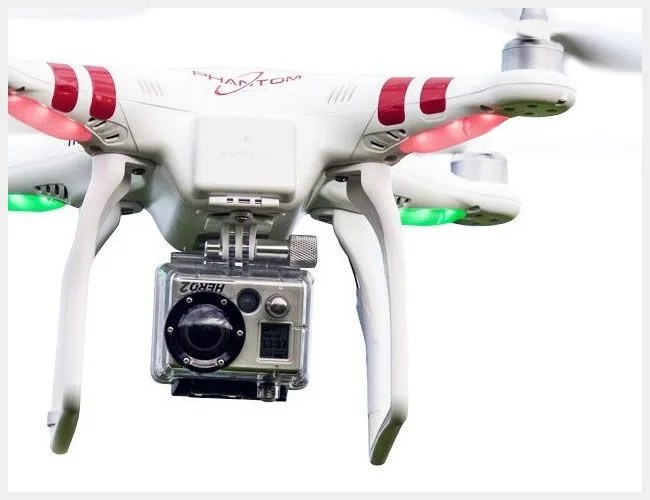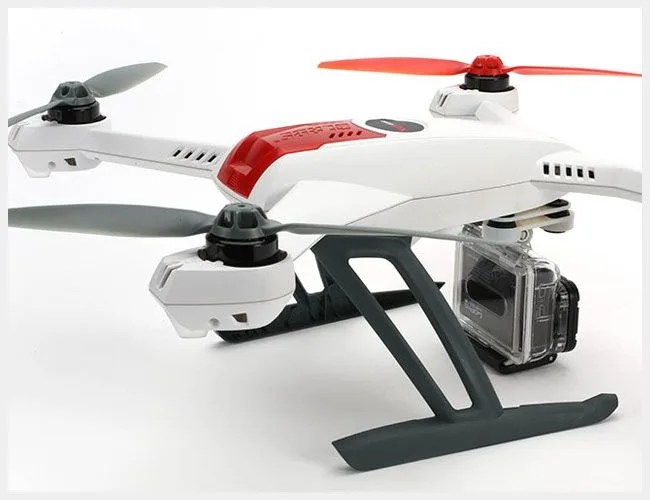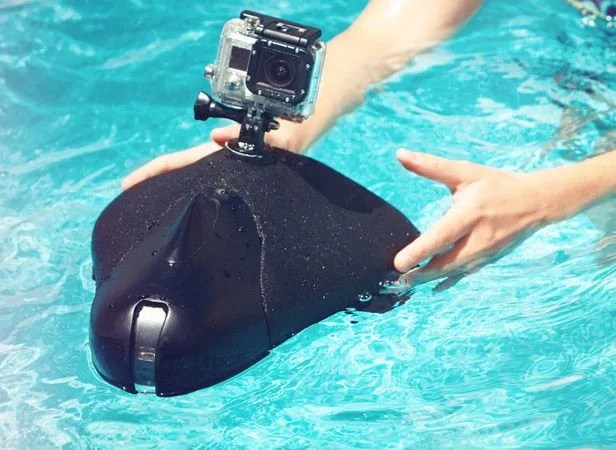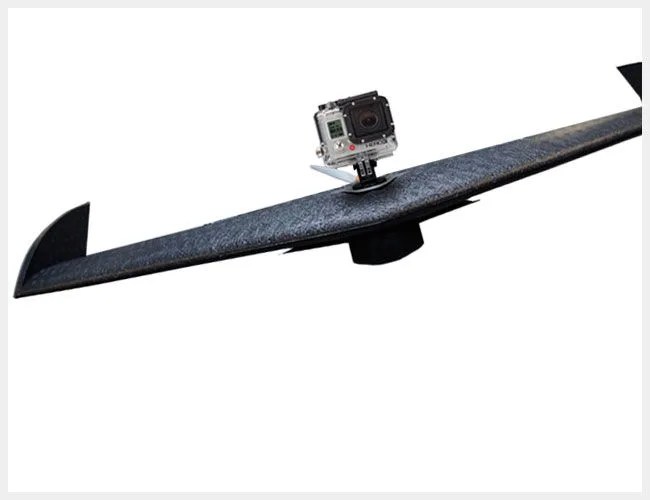The egalitarianism of modern creative tools is astounding. To make a well-produced film 20 years ago directors needed a few million dollars and a camera the size of a large dog. Luckily for us in the game of producing media on (slightly) smaller budgets, things have changed a lot. One major wave of advancement in the sea of change was the GoPro camera, released in its first relevant form in 2007 with a 3MP camera shooting 512×384 video. While that resolution was far from lending video a “high production value” look, in the six years after its release, the GoPro has evolved into an incredible, 4k-shooting, go-anywhere, do-anything action camera that can produce stunning results (if you need proof, just look at any high-test action-sports video from the past three years).
Once the portable, powerful camera had reached the masses, companies started to look for a way to leverage the GoPro’s small size and light weight — and the natural direction was up. Aerial shots, once unheard of for low-budget filmmakers without access to a couple-million-dollar helicopter, have become a reality with the smart pairing of the GoPro camera and aerial drones, which are, effectively, remote-controlled helicopters. Unsurprisingly, drones have exploded in popularity over the past two or three years and are finally beginning to arrive at price points that might make a budget-minded filmmaker’s ears perk up. With that in mind, we sought to find the best drones for aerial filmmaking; after some worthwhile learning experiences (don’t try and learn to fly one in a New York City office), we’ve arrived at our three favorites.
MORE CAMERA GEAR, BOTH HIGH AND LOW GP100: Nikon AW1 | 3 Great Monopods | 5 Best Action Cameras
DJI Phantom Aerial Drone Quadcopter

If you’re looking to get incredible imagery with a relatively shallow learning curve, the DJI Phantom Quadcopter is a great option. Straight out of the box the Phantom comes pre-paired with its minimalist but capable remote and is ready to fly following its sufficiently involved startup sequence. (Note: The startup sequence involved with all of these drones is one of the best parts. Something about all the sequential beeping and whirring motors makes you feel like CAPCOM at the beginning of an Apollo Mission.) Once you get the Phantom started up, it takes to the air with surprisingly little fanfare. This is partly thanks to its built-in GPS receiver, which works to stabilize the device and allows the pilot to think more about getting the shot than getting it stuck in a tree. The Phantom is the amateur videographer’s best friend (and the one we’ve been using for our Behind The Wheel films).
Blade 350 QX RTF

The Blade 350 QX shares a lot of qualities with the DJI Phantom — they both have similar price points and built-in GPS — but dynamically they take on very disparate identities. It’s immediately clear that the Blade has a relatively steep learning curve compared to the Phantom, if only from the significantly more button-heavy remote. The Blade is a little more complicated to set up (though the “RTF” version makes things easier), but once the rotors get spinning it can take on one of three very distinct airborne personalities depending on its mode.


